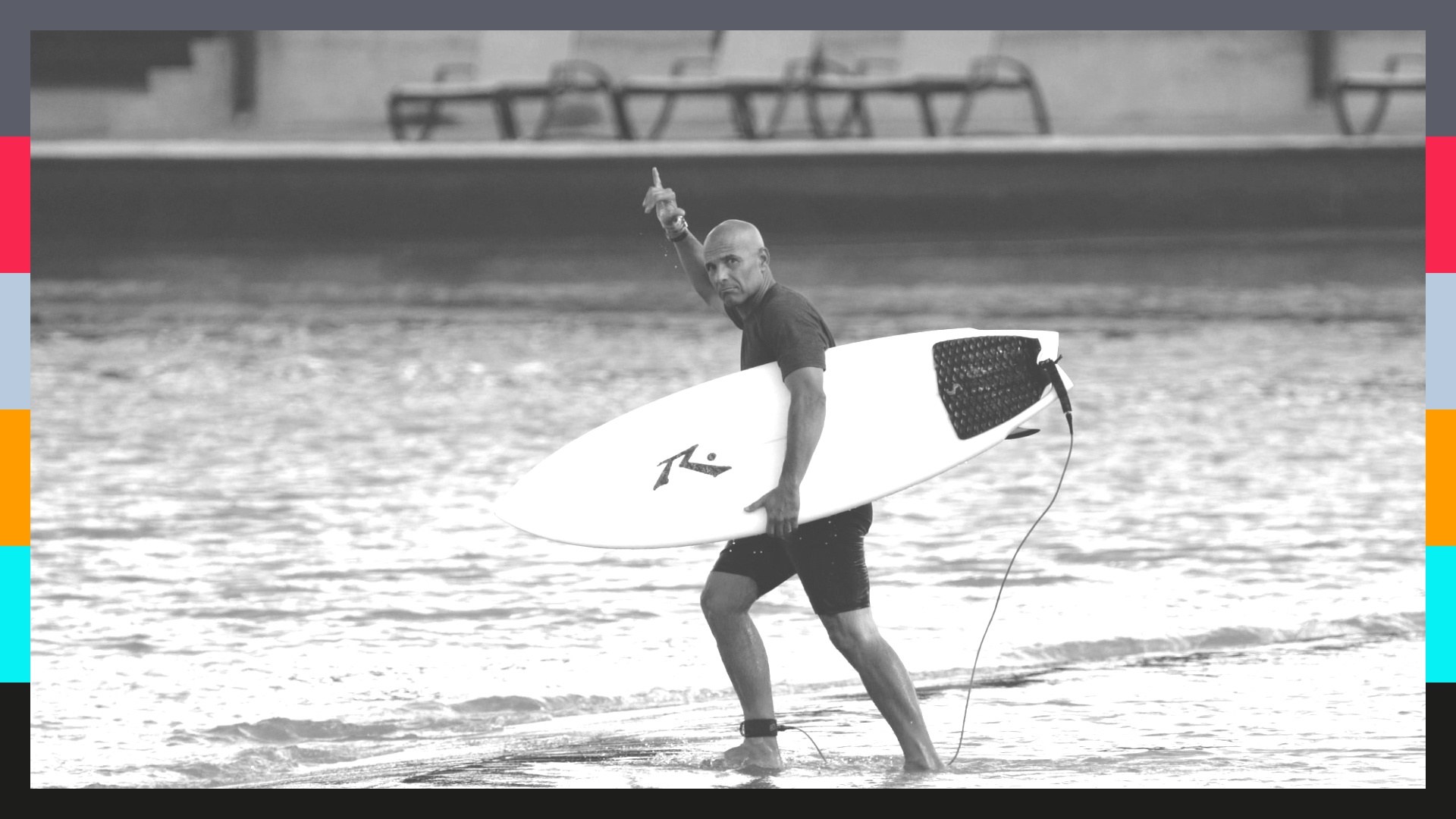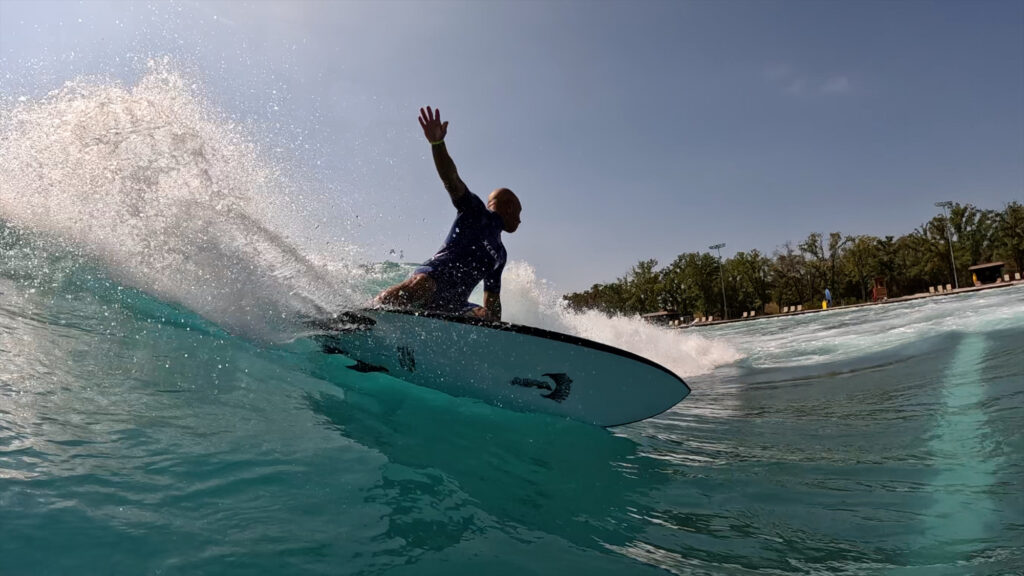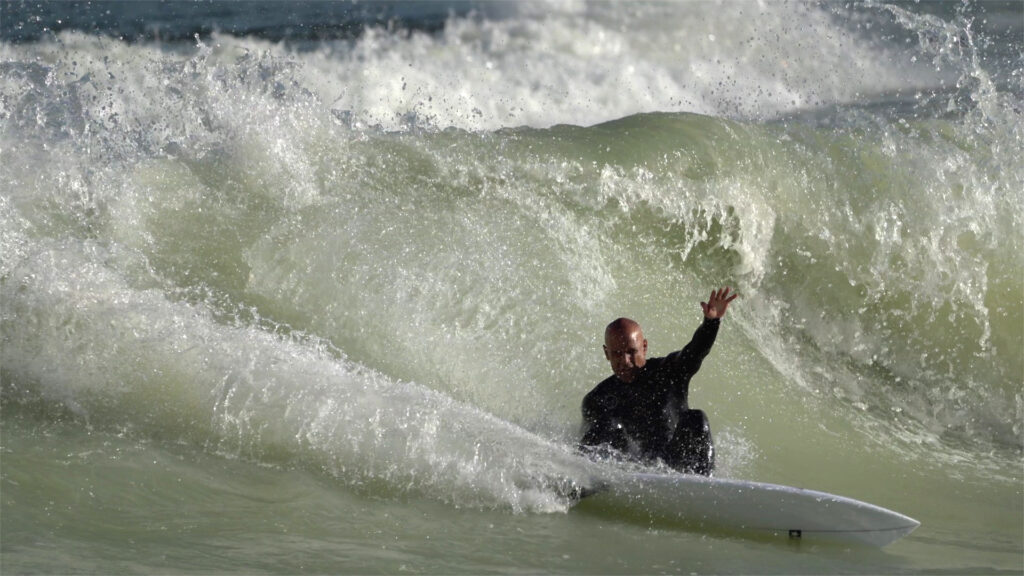Gear testing savant, coach and YouTube fixture ditches coastal zip code for Texas wave pool

Why would someone in the business of reviewing surfboards relocate from Southern California to the suburbs of Dallas, Texas? It seems to defy logic. However, that’s exactly what Noel Salas did. In February of this year he packed up his home in Orange County and moved his family to Rockwall, Texas.
Salas and his brother, Aaron, have been running the YouTube channel Surf n Show Reviews since 2015. They’ve amassed a loyal following of 51,000 subscribers who tune in to watch them test out surfboards and equipment. Their review of Firewire’s Seaside model has accumulated nearly 300,000 views.
When Salas and his wife started to think about what would be best for their children’s future, they decided to search for a more affordable place than Orange County – somewhere that would provide more opportunity for their kids. They mulled over a few areas near the ocean that would help keep the YouTube channel growing, like Florida and Puerto Rico, but ultimately they decided to move inland, 250 miles from the nearest sea.
Their attraction to Texas was simple: wave pools.

Waco Surf is just an hour and 45-minute drive south from Rockwall, and in the next year or two Sapphire Bay will unveil a new Surf Loch-powered pool down the street from their home in Rowlett. In Texas they discovered the best of both worlds – affordable living and surfing.
“It was a hard decision, but the wave pool in Waco was a huge factor in selecting Texas,” said Salas, who goes to the pool three to four weekends per month. “We needed to be close to a pool and we feel like we can get a lot accomplished at the pool in just one hour – trying different shapes, constructions, fins. The pool offers great repetition and when I get 12-13 waves in an hour, I can do what I need to a lot faster than in the ocean.”
For Salas, as a life-long ocean surfer, transitioning into a predominantly pool surfer has required some time to acclimate.
“The pool takes a bit to get used to,” said Salas. “The timing is quite different. It’s a bit more challenging because of the way that pocket is formed in the pool. It’s more triangular. Sure, catching and riding the wave is easy, but if you want to surf it like I want to surf it, it’s a timing thing.”

Now that the pool is Salas’s homebreak, he has had to adapt the content plan and programming for the YouTube channel. While the wave pool has its pros and cons, Salas admits that a pool cannot match the ocean when it comes to a variety of waves for testing boards. As a result, he hasn’t completely abandoned the ocean. Aside from making periodic trips for ocean surfing himself, he partners with people who can test the boards in the ocean and contribute to his videos.
“The pool has changed our plan a little bit,” said Salas. “I have to always put out board reviews and content that is relatable to our community. At this time in the surfing world, pools are not everywhere yet, so people want a little bit of ocean and pool. I don’t think it would go too well if we just did pool-only content.”
“At Waco everything happens fast,” Salas added. “It’s less forgiving because it’s a short, punchy wave, so you have to get your maneuvers in as quickly as possible, as opposed to point breaks in the ocean where there are slower, open faces and more time to set your feet. But I’ve also discovered that if I surf the intermediate wave at Waco, for example, which is a little smaller and gutless on the takeoff, waves two and three actually get hollow and punchy on the inside. That setting can be more relatable to someone who rides a groveler as opposed to the expert wave – like surfing mushy ocean waves at high tide.”
While property is undoubtedly cheaper in Texas than coastal California, one might wonder if driving nearly two hours and paying for every surf session still makes life in Texas cheaper. Even with the added costs, Salas can attest to the savings.
“I am paying for all my pool sessions which range between $130 and $170 per session,” said Salas. “I am also driving an hour and 45 minutes each way when I surf Waco, but even with these costs it’s cheaper. The costs we save on a day-to-day basis living in Texas is worth it. The only thing high here is property taxes, but when you are paying for a house that costs two to three times as much in California, the total tax in California is still more.”
As Salas has adapted his surf reviews to his new reality – splitting the reviews between the ocean and the pool – surfing Waco more often has also piqued his curiosity in testing boards at other pools around the world.
“I’d like to surf the plunge pool in Australia (Surf Lakes), the Korea pool, and the Brazil pools,” concluded Salas. “I want to surf them all – touring the world surfing all the different wave pools.”
While Salas’ move to Texas certainly isn’t easy for any surfer who loves the ocean, living near a surf park certainly helps make up for the lack of beach. But Salas’ story is perhaps bigger than just him. It foreshadows a possible future of reverse migration. Traditionally people from inland have sought out the coast to surf. Now coastal surfers can look for more affordable living inland, and still reap the benefits of riding waves. As more pools open far from the ocean, like in Texas, perhaps the allure will pry more ocean dwellers from the coast, like it did to Salas.
Related Coverage
